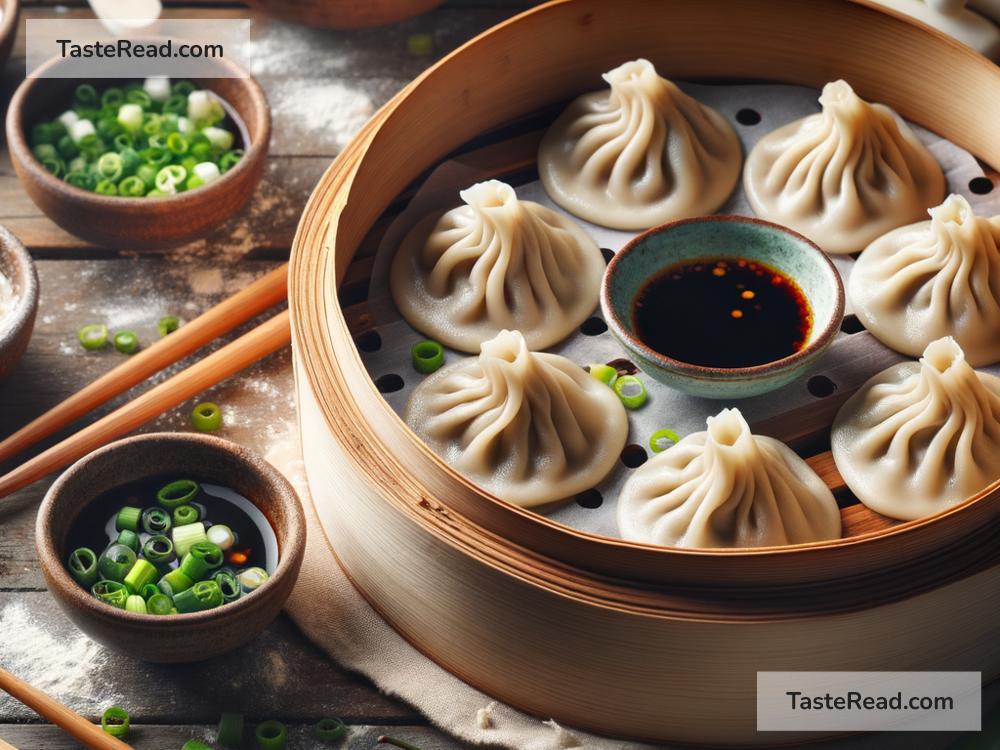The Development of Chinese Dumplings
Chinese dumplings are one of the most famous and delicious foods in China. These small, stuffed pockets of dough are popular not only in Chinese homes but also in restaurants all over the world. They can be steamed, boiled, fried, or baked, and they are filled with all kinds of different ingredients such as meats, vegetables, tofu, and seafood. But where did these dumplings come from, and how did they become such an important part of Chinese culture? In this blog, we will explore the fascinating history and development of Chinese dumplings in simple words.
The Origin of Chinese Dumplings
The story of Chinese dumplings begins over 1,800 years ago. Most historians believe they were invented during the Han Dynasty (202 BC–220 AD) by a famous Chinese doctor named Zhang Zhongjing. According to legend, Zhang Zhongjing was traveling during a harsh winter and saw many poor people suffering from frostbite. He wanted to help them stay warm and healthy, so he came up with a brilliant idea. Zhang mixed minced lamb with herbs and spices, wrapped the mixture in small pieces of dough, and boiled the dumplings.
Not only did these dumplings taste good, but they also helped people recover from the cold. Zhang Zhongjing’s creation became known as “jiaozi,” which is the name still used today. At first, jiaozi was considered a type of Chinese medicine, but over time, people began making them as a regular food because they were so tasty and filling.
Dumplings in Chinese Culture
For centuries, dumplings have been closely connected to family, tradition, and celebrations in China. One of the most important times people eat dumplings is during Chinese New Year, which is the biggest holiday in China. Families gather together to make dumplings, as preparing them is seen as a way to spend quality time with loved ones.
Dumplings are often shaped like ancient Chinese gold or silver ingots, which symbolize wealth and prosperity. Eating dumplings during New Year is believed to bring good fortune in the coming year. Some families even hide a coin inside a dumpling, and whoever finds the coin is said to have extra luck!
Aside from New Year celebrations, dumplings are also enjoyed at other events like weddings and gatherings. They represent unity and bring people closer together.
Regional Varieties of Dumplings
While dumplings started with Zhang Zhongjing’s simple recipe, over time they have developed into many different styles and flavors across China. Different regions have their own ways of making dumplings, and the ingredients used often reflect local tastes and traditions.
-
Northern China: In northern China, dumplings are especially popular. The dough is thick and chewy, while fillings often include pork, cabbage, scallions, and garlic. These dumplings are usually boiled or steamed and eaten with soy sauce or vinegar dipping sauce.
-
Southern China: In southern China, people make dumplings with thinner dough and more delicate fillings. For example, shrimp dumplings (har gow) are a famous Cantonese dim sum dish. The dumplings are transparent and smooth, and they are steamed to perfection.
-
Sichuan: In the Sichuan region, dumplings are often spicy and served with chili oil. “Sichuan spicy wontons,” called “hong you jiao shou,” are dumplings floating in a hot and flavorful sauce. These dumplings are perfect for people who love bold flavors.
-
Shandong: Shandong-style dumplings are large and hearty, filled with generous portions of seafood, such as shrimp or fish. Since Shandong is located near the sea, seafood has become a popular choice for dumpling filling.
-
Other Variations: Beyond China, dumplings have influenced many neighboring countries, including Japan, Korea, and Mongolia. Each culture has added its own twist to dumplings, showcasing how this simple food has spread across the globe.
Modern-Day Dumplings
Today, dumplings have become even more creative and diverse. Chefs and home cooks alike experiment by filling dumplings with unusual ingredients like cheese, chocolate, or even fruits. Dumplings can be vegetarian, vegan, or gluten-free, making them a food that anyone can enjoy.
Dumplings are also an international favorite. In the United States, “potstickers” are inspired by Chinese dumplings and are often served pan-fried with dipping sauce. In Europe, people make similar dishes, such as Polish pierogi or Italian ravioli. This shows how dumplings have connected people from different cultures around the world.
Conclusion
Chinese dumplings have grown and evolved over the centuries, but they still hold a special place in the hearts of people in China and beyond. What started as a remedy for frostbite has become a symbol of family, tradition, and unity. Whether you’re eating dumplings at a New Year feast with family or enjoying them as street food in a bustling market, their rich history reminds us of how food can bring people together.
So the next time you bite into a delicious dumpling, take a moment to think about its long journey from Zhang Zhongjing’s idea to the countless varieties enjoyed today. Dumplings are more than just food—they are a connection to history, culture, and the joy of sharing meals with others.


